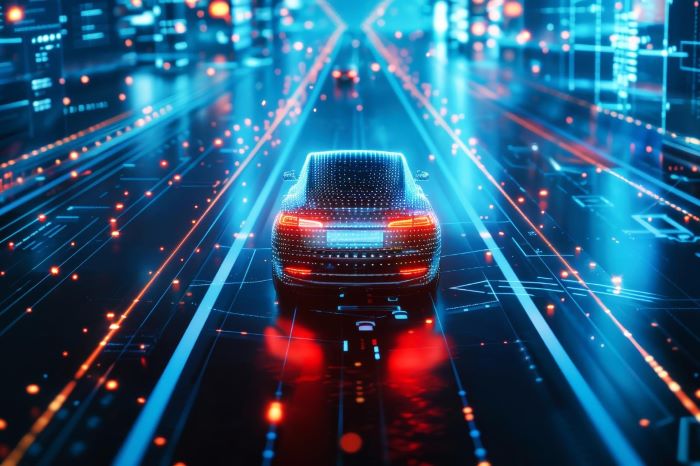Introduction:
The automotive industry is in the midst of a technological revolution, with advancements in connectivity, automation, electrification, and mobility reshaping the way we think about transportation. From advanced driver assistance systems to cutting-edge infotainment features, the latest automotive technologies are redefining the driving experience and paving the way for a more connected, efficient, and sustainable future. In this article, we take a deep dive into the latest automotive technologies, exploring their impact on the industry and the driving experience.
Introduction to Cutting-edge Automotive Technologies:
Cutting-edge automotive technologies encompass a wide range of innovations aimed at enhancing vehicle safety, efficiency, comfort, and connectivity. These technologies leverage advancements in sensors, artificial intelligence, connectivity, and electrification to deliver new capabilities and features that were once thought impossible. From adaptive cruise control and lane-keeping assist to augmented reality displays and vehicle-to-everything (V2X) communication, the possibilities are endless.
Advanced Driver Assistance Systems (ADAS):
Advanced driver assistance systems (ADAS) represent one of the most significant technological advancements in the automotive industry. These systems utilize sensors, cameras, radar, and other technologies to monitor the vehicle’s surroundings and assist the driver in various driving tasks. Common ADAS features include:
- Adaptive Cruise Control: Automatically adjusts the vehicle’s speed to maintain a safe distance from the vehicle ahead.
- Lane-Keeping Assist: Helps the driver stay within the lane by providing steering input or alerts when drifting out of the lane.
- Blind Spot Monitoring: Alerts the driver to vehicles in the blind spots, reducing the risk of collisions during lane changes.
- Automatic Emergency Braking: Detects imminent collisions and applies the brakes to avoid or mitigate the impact.
Connectivity Features:
Connectivity features are transforming the driving experience by enabling seamless integration with smartphones, cloud services, and the internet. These features allow drivers and passengers to stay connected, entertained, and productive while on the road. Examples of connectivity features include:
- Infotainment Systems: Touchscreen displays with intuitive interfaces that provide access to navigation, music, apps, and other multimedia content.
- Smartphone Integration: Integration with popular smartphone platforms, such as Apple CarPlay and Android Auto, allows users to access their favorite apps and features directly from the vehicle’s infotainment system.
- Vehicle-to-Cloud Services: Cloud-based services that enable remote vehicle monitoring, diagnostics, software updates, and over-the-air (OTA) feature enhancements.
Emerging Technologies:
In addition to ADAS and connectivity features, several emerging technologies are poised to revolutionize the automotive industry. These include:
- Augmented Reality Displays: Overlaying digital information onto the driver’s field of view, augmented reality displays provide real-time navigation, hazard alerts, and other relevant information without distracting from the road.
- Vehicle-to-Everything (V2X) Communication: V2X technology enables vehicles to communicate with each other, infrastructure, pedestrians, and other road users, enhancing safety, traffic efficiency, and mobility.
- Artificial Intelligence and Machine Learning: AI-powered systems analyze data from sensors and other sources to improve vehicle performance, optimize driving routes, and personalize the driving experience.
Implications of Automotive Technology Advancements:
The advancements in automotive technology have far-reaching implications for the industry, society, and the environment. These include:
- Enhanced Safety: ADAS features and other safety technologies have the potential to significantly reduce the number of accidents and fatalities on the road.
- Improved Efficiency: Electrification, lightweight materials, and aerodynamic design contribute to improved fuel efficiency and reduced emissions.
- Enhanced Convenience: Connectivity features and autonomous driving capabilities make driving more convenient and enjoyable, allowing occupants to focus on other tasks or activities while on the road.
Potential Future Developments:
Looking ahead, the future of automotive technology holds exciting possibilities for further innovation and advancement. These may include:
- Continued Evolution of Autonomous Driving: Fully autonomous vehicles that can operate without human intervention in a wide range of driving conditions.
- Electrification of the Vehicle Fleet: Increasing adoption of electric vehicles (EVs) and advancements in battery technology to improve range, charging times, and affordability.
- Integration with Smart Cities: Vehicle-to-infrastructure (V2I) communication and other technologies that enable seamless integration with smart city infrastructure, traffic management systems, and mobility services.
Conclusion:
In conclusion, the latest automotive technologies are transforming the way we think about transportation, offering new capabilities, features, and experiences that were once the stuff of science fiction. From advanced driver assistance systems to connectivity features and emerging technologies like augmented reality and vehicle-to-everything communication, the possibilities are endless. As automakers continue to innovate and push the boundaries of what’s possible, the future of mobility promises to be safer, more efficient, and more connected than ever before.




